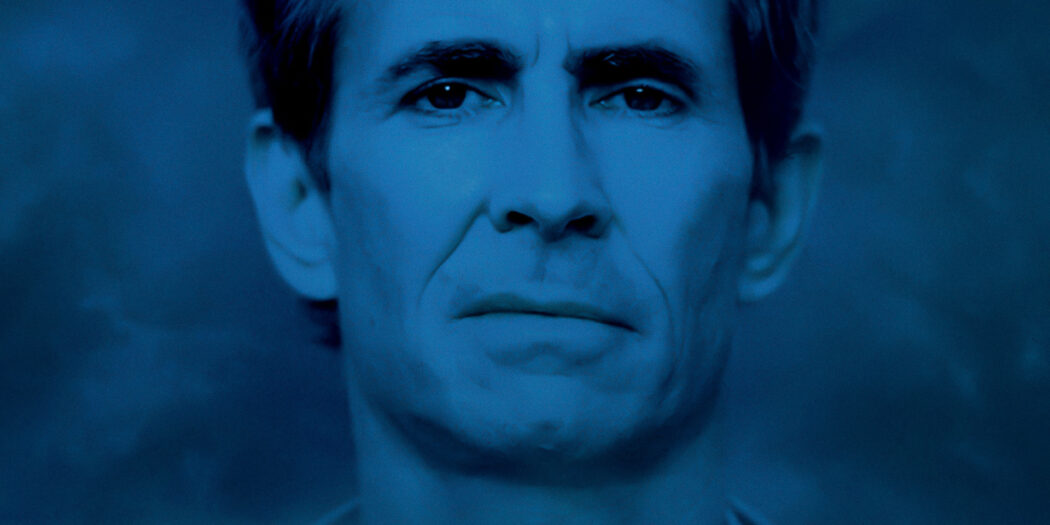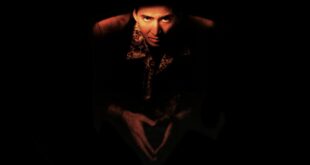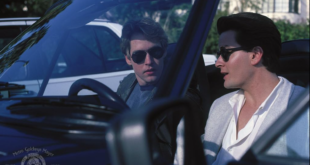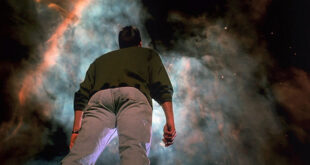“The reputation of Psycho II continues to grow because Norman’s character had an arc to it – he starts out as someone who is desperately trying to hold onto his sanity, and he ends up as mad as a hatter! I never realised the power of film until I saw Psycho. That was the first of the modern era of horror movies. The impact on me was enormous.” – Tom Holland, screenwriter of Psycho II.
Usually, I’m not the biggest fan of sequels. I lament heading to the movie theater once or twice a week, and all the previews/posters are for movie sequels or remakes. It’s the ultimate sign of a lack of trust in original creative work by significant studios these days. However, occasionally sequels are warranted. They can add something new to the original film’s mythos or go in a different direction, like Texas Chainsaw Massacre 2 or Gremlins 2. Psycho II is one of my favorite sequels. A rare one that doesn’t feel like a complete cash grab with more to add to the story of Norman Bates. Psycho II is a splendid model of what a proper sequel should be. Take the story from the original and expand on it while driving it in new and exciting directions. If we had some sympathy for Norman Bates in Alfred Hitchcock’s classic 1960 film Psycho, in Psycho II, we are practically rooting for him the entire way. The film plays on our expectations to give us surprising and clever turns.

Plot-wise, the most prominent hump to get over is buying that Norman Bates would be released 22 years later, almost at the cheering of the authorities and Dr. Bill Raymond played by Robert Loggia. He’s accepted in the town again almost immediately though that could be more of a small-town acceptance of their own. Someone not so thrilled is Lila Loomis, the sister of Marion Crane, who puts up stiff passionate resistance to no avail. Norman moves to his old home, the famous house, still standing from when it was built for the first film. He starts working at a nearby diner and befriends Mary played by Meg Tilly, who has just broken up with her boyfriend and needs a place to stay. After all, Normal does own a motel. As it turns out, the Bates Motel is being run by the sleazy Warren Toomey (a consistently excellent Dennis Franz), who Norman fires for running the motel as a place where kids come to party and do drugs. Soon Norman starts to receive mysterious phone calls and notes from “Mother” everywhere he goes. To complicate things, Toomey turns up murdered. Is Norman beginning to lose his mind again? Is someone playing a prank on Norman? These are the central driving points of the film, especially Norman’s mental health.
Alfred Hitchcock’s Psycho was a monumental achievement that gave birth to the slasher genre. No matter whose hands it fell on, a sequel would be a huge undertaking. Luckily, the team assembled for Psycho II was good, and the film is all the better for it. Your standard sequel might be Norman escaping from a mental institution and going on a killing rampage. After all, 1983 was the height of the slasher genre, with Halloween and Friday the 13th already well in the cultural lexicon. Here, director Richard Franklin and screenwriter Tom Holland present a sensitive Norman who tries hard not to fall back into old habits.
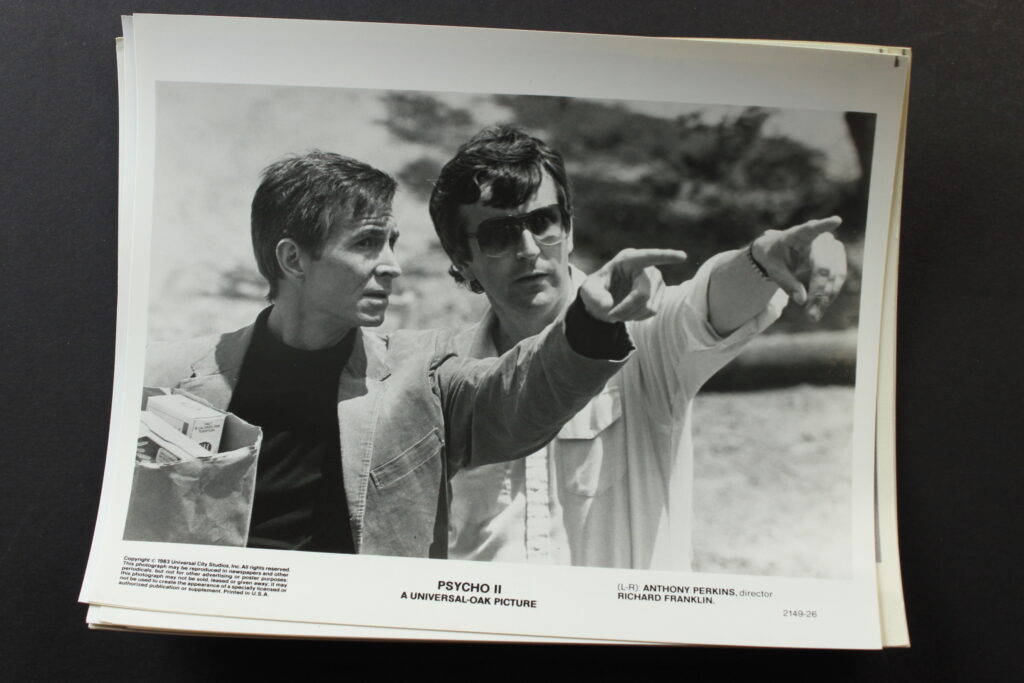
Richard Franklin was an Australian director who was a student of Hitchcock’s and studied alongside Lucas, Zemeckis, and John Carpenter at USC. He knew Hitchcock personally. For some reason, Franklin’s career never took off despite some excellent films like Patrick, Roadgames, and Psycho II. This gives the film the authenticity of almost being directed by Hitchcock himself. Franklin was a perfect choice. His direction in the movie is sublime and provocative. The script is witty and almost like a game of Clue that will keep you guessing until the end. So not only do we get a deep character study of Norman Bates, we get a suspenseful mystery as well. The screenplay was by Tom Holland, known for writing and directing Fright Night (1985) and the first Child’s Play series film. It’s also an excellent-looking film. Shot by Dean Cundey, who just came off John Carpenter’s two best films, Escape from New York and The Thing. Almost as legendary as Hitchcock was Bernard Herrmann’s score of Psycho, and Jerry Goldsmith did an excellent job with the score in the sequel, which stands for a part from Herrmann.
The acting from top to bottom is first-rate as well. Anthony Perkins is tremendous, and we get deep inside Norman’s mind. Perkins’s acting also keeps us guessing or on the edge of our seats about whether Norman will return to killing again. Vera Miles makes a strong return as Lila Loomis. She brings an intensity and focus that fits the role perfectly. Robert Loggia was not in the first film but played Norman’s psychiatrist well. I have to laugh because Loggia is the most normal person in a Psycho film. Usually, it’s Loggia playing the crazy person. Dennis Franz is an expert at playing unpleasant characters, and he does so with relish again playing the sleazy Toomey. Claudia Bryar also has a memorable supporting role as Emma Spool, who tells Norman that she is, in fact, his mother.
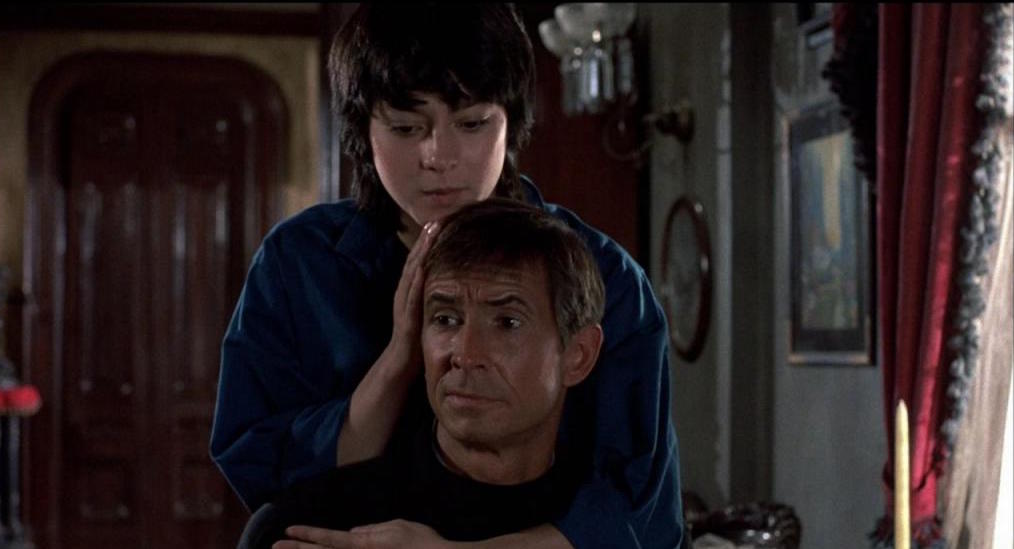
Spoilers:
This brings us to Meg Tilly as Mary, who turns out to be the daughter of Lila Loomis. It also turns out that she and her mother have been tormenting Norman, writing him notes and even dressing up as Mother to confuse and horrify him. Tilly was a new actress at the time, and she more than held her own with the more experienced actors, even though making the film was not the most pleasant time for her. She and Anthony Perkins did not get along on set. However, that doesn’t make its way into the film, and Tilly and Perkins have remarkable chemistry. You might be like, why is this young girl hanging with an older man like Norman, known for his shady past? Well, that’s answered by Tom Holland in one of the film’s twists. Tilly makes us understand how she might come to care for someone like Norman. The film also gives us unspoken sexual tension between the two characters. Never uncomfortable per se, but always underneath the surface.
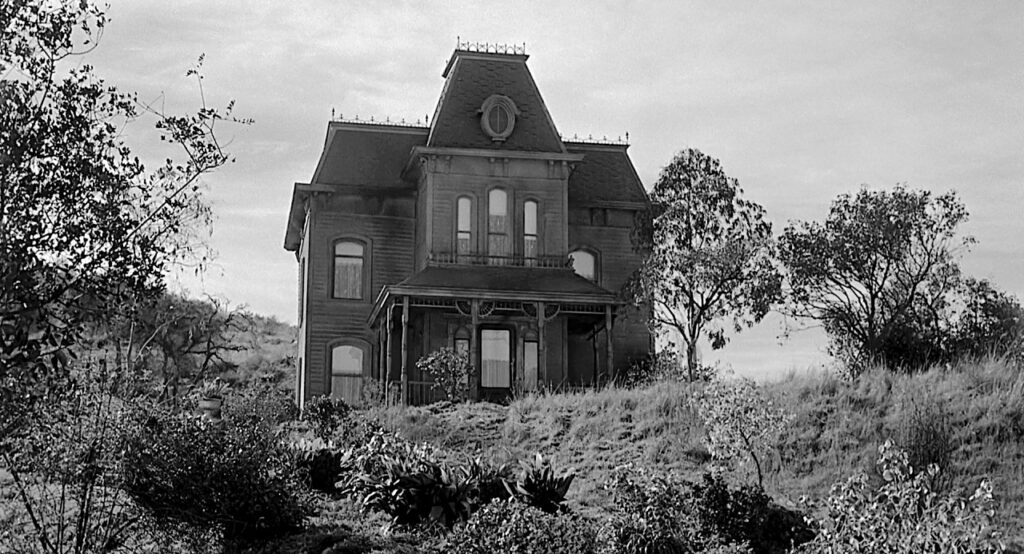
Another thing I love about Psycho II is that most of the action takes place inside the infamous Bates house. We rarely got to go in there for the first film, and here we spent the entire movie practically. The house is a character in the film itself, and we begin to understand how it’s driving Norman insane. There’s something supernatural, almost Poltergeist, about the house and film as well. The film is never overtly supernatural, but we get the feeling that ghosts of the past haunt the place.
Give Psycho II a chance, even if you had seen it before and decided on it. It does an impressive job of keeping the audience guessing until the end while giving us intense character drama. It’s both complex and straightforward. Fun and scary. It sets itself apart from the first Psycho while carving out its path interestingly. This makes Psycho II an ideal sequel. It’s the Norman Bates story. Not only that, Norman is the sane one in the story, for the most part. Below I’ll post links to videos I used to help me write and analyze this article.
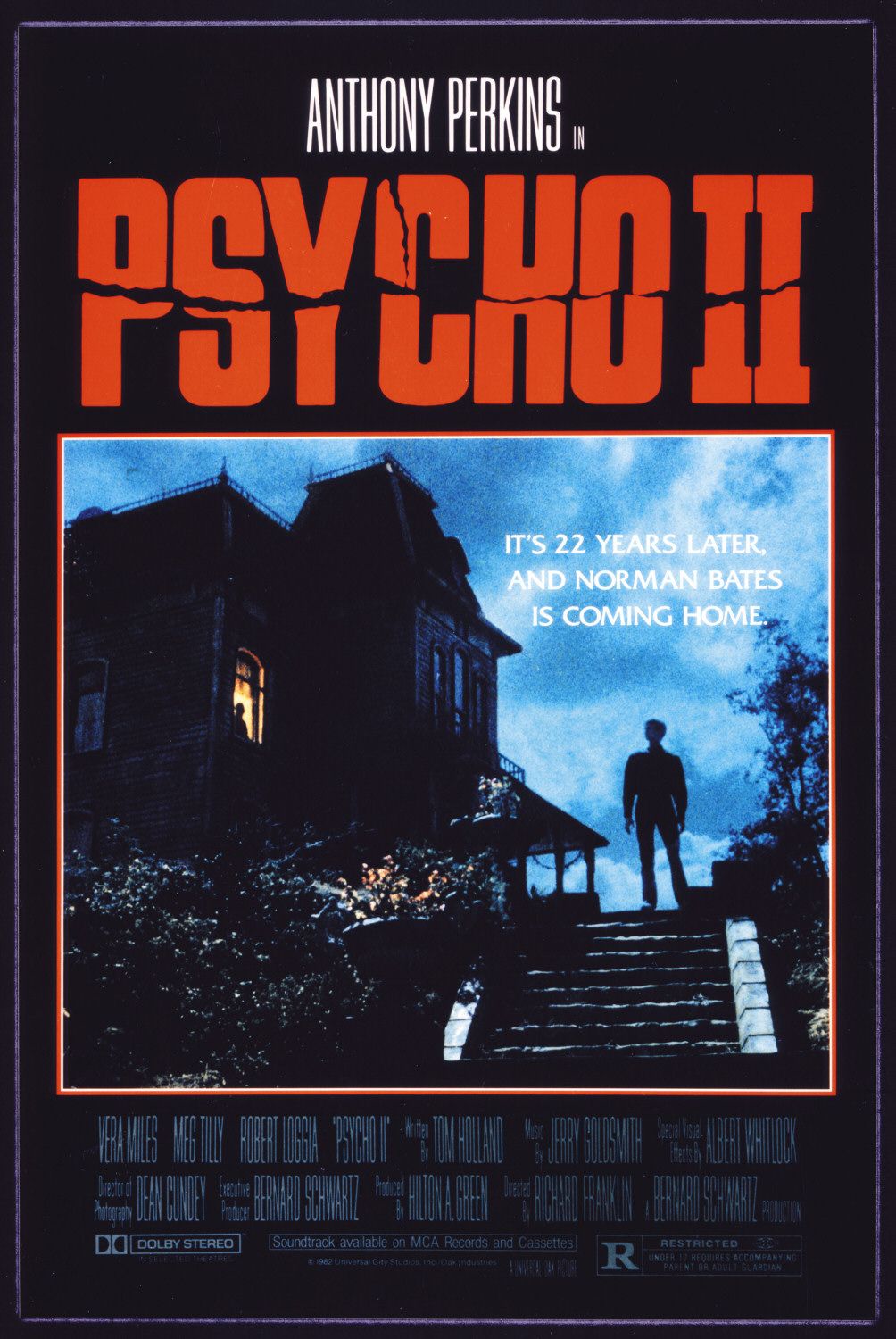
 Movie Finatics The Place for Movie Lovers
Movie Finatics The Place for Movie Lovers
